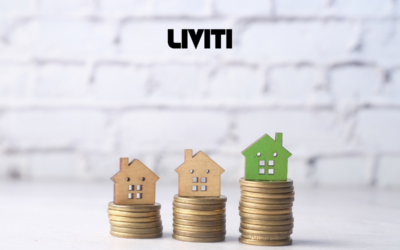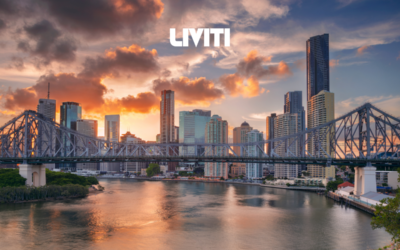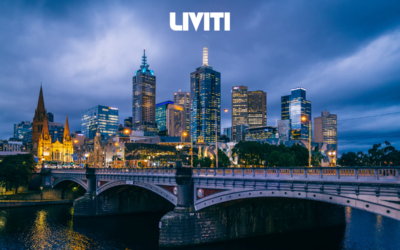We’ve all heard that it’s not easy for young people to buy a property in the current property market. Record high house prices, slow wage growth, and other economic uncertainties make everyone struggle to buy their first home.
So, will putting money into a super fund to save for a home deposit make it easier?
The First Home Super Saver Scheme will let you do just that. So, let’s dive right in.
How does the First Home Super Saver Scheme work?
As you all probably have known, super is the money set aside for your retirement.
However, to reduce pressure on housing affordability, the Australian Government introduced the First Home Super Saver Scheme in 2017, allowing first home buyers to make voluntary contributions towards their super and use it as a deposit.
Your savings, but lower tax
While it may not be the simplest strategy to increase your savings for a home purchase, this scheme can help you lower your taxable income while increasing your deposit. Simply put, because your super account has a lower tax rate than your savings account, you’ll wind up saving more.
If you make $60,000 per year, for example, your tax rate outside of super is 34.5 per cent, including the 2% Medicare levy.
Meanwhile, your super’s effective tax rate of voluntary contributions is only 15%. So by putting the money in super, you reduce your taxable income – the higher your tax rate, the better the benefits.

The earnings from your contributions
Other than the amounts you’ve contributed to your super fund, you can also withdraw the interest that you receive from your contributions.
The good news is that the Government allows FHSS scheme participants to calculate earnings using a fixed deemed rate, so you won’t lose out if your super performs poorly. The current “deemed rate” is 3.04% – which is much higher than the interest offered by savings accounts.
So, if your yearly super saver contribution is $15,000, $387.60 would be taken into account when you withdraw your FHSS money.
How the FHSS Scheme works
Here is a simplified version of a step by step on how the FHSS Scheme works:
- Step 1: Make voluntary contributions to your super fund.
- Step 2: Save up to the capped amount of $30,000 for singles and $60,000 for couples (Maximum $15k per financial year)
- Step 3: Apply to the ATO for an FHSS determination – this will tell you the maximum amount that you can release.
- Step 4: Withdraw funds from your super and buy your first home

How to set up and contribute to FHSS?
To be clear, the FHSS is not a new or separate account into which funds can be deposited. It allows you to save money and buy your first home using your existing super account. Your FHSS is ‘set up’ when you meet the requirements.
Here is how you can contribute to your FHSS:
- Before-tax contributions include salary sacrifice contributions and any personal after-tax contributions you claim a tax deduction.
- After-tax contributions include any extra contributions you make from money you’ve already paid tax on, like your after-tax salary.
Note: You can’t include contributions made by your employees or anyone else on your behalf in FHSS determination.
How much super can you contribute under the First Home Super Saver Scheme?
This scheme allows you to save up to $30,000 in voluntary contributions altogether. And, You can save up to $15,000 over the course of each financial year.
Under this scheme, you can use super as a deposit to buy any residential property in Australia or build your own home.
Changes to the scheme from July 2022
From 1 July 2022, you’ll be able to save more through the scheme – up to $50,000 per person.
The maximum amount per year that you can contribute remains the same, capped at $15,000. So, if you want to get the full benefit out of this scheme, make sure to start contributing to your super funds at least 3 years before you actually buy.
Are you eligible for FHSS?
If you are a first home buyer and considering using your superannuation to buy your first home, the below eligibility criteria apply:
- Be a member of a superannuation fund.
- Be at least 18 years old.
- At least one applicant must be an Australian citizen or a permanent resident at the time of making an application.
- Not currently and have never previously owned property in Australia, including investment property, vacant land, commercial property, a lease of land or a company title interest in land.
- Not previously made an FHSS release request under the FHSS scheme
Note that eligibility is assessed on an individual basis, meaning that if you apply as a couple, you both can contribute to your super and then access your own FHSS contributions to purchase the same property.
For example, two persons buying the same house might each get up to $30,000, bringing the total amount available to $60,000. From 1 July 2022, the total money a couple can withdraw is up to $100,000.
How to apply for the first home super saver scheme?
If you have satisfied the eligibility requirements for the FHSS Scheme, you can request the ATO to issue an FHSS determination and a release. And you can do this through the ATO’s service on your MyGov account — you don’t need to contact your super fund.
This determination will state the maximum amount that can be released to you under the FHSS Scheme as of the determination date. You can ask for an FHSS determination as many times as you want.
ATO will consider applicable taxes to determine how much money could be released from your super saver fhss scheme.
- 100% of eligible non-concessional contributions (after-tax contributions)
- 85% of eligible concessional contributions (pre-tax contributions)
- Associated earnings using the deemed rate of return.
One thing to remember is that you must obtain an FHSS determination before signing a contract to buy any property. In most circumstances, you are no longer eligible to request an FHSS determination once you sign a contract to acquire a home.
As a result, we recommend that you do so when applying for a home loan. After that, you have a year from the date you requested your FHSS funds to sign a contract to buy or build a house.
Don’t worry if your first home purchase doesn’t go as planned; you will have another 12 months to sign your home contract or cancel your FHSS scheme application.
You can apply for an FHSS determination and request a release here.
Important things to keep in mind before releasing your FHSS money
Once the determination has been decided, you can request the funds to be released. It can be done either from ATO or via your MyGov.
- You can apply for the release only once.
- Keep in mind that it might take up to 25 business days for your fund to be released and for ATO to pay you the money. Therefore, you need to buffer in about 5 weeks to get your savings released.
- You have 24 months in total from the date you apply for FHSS determination to sign a contract to buy or build a home. At the end of your first 12 months, the ATO will automatically grant a 12-month extension and notify you of this.
- You need to pay tax on the way out too. The ATO will withhold tax based on your expected marginal tax rate.
- You can lodge your tax return with your actual income at the end of the financial year and get your withholding tax back.
- Within 28 days of entering a contract to buy or build a property, you must notify the ATO.
- If you release the money but don’t buy a house, you’ll have to pay additional taxes to keep it or redeposit it in your retirement account.
The Benefits of the FHSS?
As mentioned above, the biggest benefit of using the first home super saver scheme is the lower tax rate you may pay. If your income is less than $250,000 per year, you only pay a fixed 15% tax rate on your contributions instead of your normal marginal tax rate.

You can check the figure below for an easy example of saving you could make with FHSS.

Other benefits you can get from FHSS include:
- The more salary sacrifice arrangements you contribute to your FHSS, the lower your taxable income. So, you pay less on your income tax too.
- You will receive a fixed rate interest on your eligible contributions, with less applicable taxes too. The rate you receive is 3.04%, much higher than most interest rates that you get from banks.
- If you change your mind, the savings remain in your super fund and go toward your retirement savings.
Some limitations you need to consider…
While FHSS allows you to save for your first home using your super account, it does come with some restrictions. To begin with, you can’t take money out of it like you can with a regular savings account.
With FHSS, you can only apply and withdraw your money once.
After that, the ATO calculates your earnings based on your qualified contributions and applies any applicable tax and tax offsets.
The ATO will use’ ordering rules to compute the maximum FHSS release amount. For additional information on eligibility and how to access funding, visit: ato.gov.au/FHSS
Additionally, suppose your annual income (including your before-tax contributions) exceeds $250,000. In that case, you may be required to pay an extra 15% on any or all of your before-tax contributions (bringing the total contributions tax to 30%).
Summary of the pros and cons of the FHSS scheme
Here are the pros and cons of FHSS:
The Pros:
- Save more money on tax repayments with lower super tax (15%)
- If you apply as a couple, you both can contribute your funds under the scheme and buy the same house
- The amount you can withdraw doesn’t vary with falling markets
- After you withdraw the funds, you will have a total of 24 months window to buy a home with the released money.
The Cons:
- Money can only be accessed when you purchase your first home
- Superfund fees apply (generally including an exit fee upon withdrawal)
- You must save no more than $15,000 per year, so you’ll need to plan in advance if you want to save more
- It takes time to get your money
Consider the rising property market
According to CoreLogic, in 2021 alone, median house prices in Sydney rose by a whopping 26%.
Under the current red hot property market, we highly recommend that you consider using the scheme to save for longer vs entering the property market early, based on your finances, plans, and personal circumstances.
If you have saved enough for your home deposit, the tax savings you can take advantage of through the FHSSS may be cancelled out by the extra dollars you’ll pay for a house at a later date.
Seek professional advice!
If you are still wondering whether the FHSS scheme is right for you, you can find more information about the scheme here or speak with a professional financial adviser from our Liviti team.






